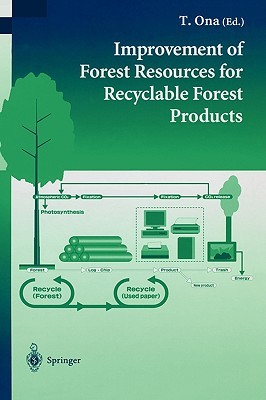
- Išsiųsime per 10–14 d.d.
- Leidėjas: Springer
- Metai: 2004
- ISBN-10: 4431202501
- ISBN-13: 9784431202509
- Formatas: 15.6 x 23.4 x 1.3 cm, kieti viršeliai
- Kalba: Anglų
- Extra -15 % nuolaida šiai knygai su kodu: ENG15
Improvement of Forest Resources for Recyclable Forest Products + nemokamas atvežimas! | knygos.lt
Atsiliepimai
Aprašymas
It is an honor and pleasure for me to write the foreword of this book comprising the of Forest Resources for proceedings of the Fourth Symposium on the Improvement Recyclable Forest Products. The symposium was organized by Dr. Toshihiro Ona, Associate Professor at the Graduate School of Bioresource and Bioenvironmental Sciences, Kyushu University, Japan, as part of the Development of Forest Resources with High Performance for Paper Recycling research project. This was supported by the Core Research for Evolutional Science and Technology (CREST) team at the Japan Science and Technology Agency Foundation (lST) and by Kyushu University. As a colleague of Dr. Ona, I commend his efforts in organizing the symposium and editing this book. In the forest, there is a multitude of resources, including trees, herbal plants, fruits, fungi, mammals, birds, insects, fishes, reptiles, water, landscapes, and tourist attractions. Nowadays, even the environment is regarded as a kind of forest resource. These resources can provide a diversity of forest products, such as timber for buildings, pulp and paper, charcoal, herbal medicines, wild vegetables, animal protein, edible mushrooms, and nonwoody fibers. From these resources, major forest products are produced using various species of trees. For example, softwood is suitable as building material, while hardwood is suitable for furniture production; pulp and paper are produced from both softwood and hardwood. Therefore, forest locations and forest management methods should vary according to the tree species used for production of different forest products.EXTRA 15 % nuolaida su kodu: ENG15
Akcija baigiasi už 5d.14:54:03
Nuolaidos kodas galioja perkant nuo 10 €. Nuolaidos nesumuojamos.

- Leidėjas: Springer
- Metai: 2004
- ISBN-10: 4431202501
- ISBN-13: 9784431202509
- Formatas: 15.6 x 23.4 x 1.3 cm, kieti viršeliai
- Kalba: Anglų




Atsiliepimai